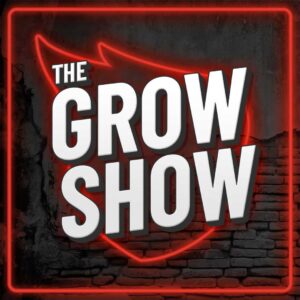As architectural firms adapt to the evolving demands of the market, mastering demand generation becomes essential. For leaders and marketing managers in architecture, generating consistent leads and translating them into projects is not just a goal- it’s vital for growth. In this article, we outline a holistic plan centered on the keyword demand generation architects, offering a roadmap that includes webinars, downloadable content, and nurturing flows. Our goal? To help architecture firms build predictable lead pipelines and stand out as leaders in design innovation.
Contents
- 1 Why Demand Generation Matters for Architects
- 2 Identifying Core Audience Personas
- 3 Webinars That Generate Demand
- 4 High-Value Downloads to Capture Interest
- 5 Designing an Automated Nurturing Flow
- 6 Targeted Ads to Amplify Reach
- 7 Landing Pages That Convert
- 8 Hosting a Demand Gen Discovery Call
- 9 Measuring the Success of the Plan
- 10 Content Themes That Reinforce Brand Identity
- 11 Bringing It All Together
- 12 Tips for Adoption and Team Execution
- 13 Case Study Snapshot: Hypothetical Implementation
- 14 Overcoming Common Objections
- 15 Final Thought: Demand Generation as a Core Growth Engine
Why Demand Generation Matters for Architects
Consistency in a Competitive Landscape
Architecture firms vie for attention in saturated markets. Relying on referrals isn’t enough anymore. A demand generation system ensures that pipelines stay filled- even during slower seasons.
Positioning as a Thought Leader
When firms offer valuable insights- through webinars or content- they build credibility. Prospects begin to see them as trusted experts, not just service providers.
Cost Efficiency and ROI
Compared to broad digital advertising, demand generation focuses on targeted outreach and engagement. This approach can lower cost per lead and increase ROI through nurturing and relationship building.
Identifying Core Audience Personas
Before planning content, define who you are targeting. Typical personas might include:
- Corporate Real Estate Managers: Seeking transformative designs for commercial buildings. They value efficiency, ROI, and innovation.
- Institutional Clients: Like schools or hospitals, often needing sustainable, user-centered designs with community impact.
- Residential Developers: Focused on single-family or multifamily housing projects. Prioritize design quality as a market differentiator.
- Institutional Leaders: Decision makers in universities or municipalities, focused on long-term urban planning and design excellence.
For each persona, ask: What challenges do they face? What questions are top of mind? How can architectural expertise solve those problems?
Webinars That Generate Demand
Webinars are a powerful tool in the demand generation architect’s toolkit. They educate, build trust, and convert passive site visitors into engaged prospects.
Choosing Relevant Topics
Pick themes aligned with your firm’s strengths and audience pain points. Examples:
- Designing for Sustainability: “Green Building Trends That Cut Costs”
- Adaptive Reuse Success Stories: Case studies of repurposed industrial or historic buildings
- Smart Building Technologies: How IoT is enabling smarter campuses and offices
Ensure each webinar tackles real challenges and offers actionable takeaways.
Crafting the Webinar Experience
- Promotion: Use email invitations, LinkedIn ads, and partnerships with industry associations.
- Engagement: Include polls, chat Q&A, and interactive design walkthroughs during the webinar.
- Recording & Follow‑Up: Share the recording with attendees and non-attendees to maximize reach.
Webinar Funnel and Lead Capture
Use a gated registration form to collect name, email, company, and project type. After the webinar, send a thank-you email with a relevant download or checklist and a clear CTA: “Schedule a Demand Gen Discovery call.”
High-Value Downloads to Capture Interest
Whitepapers, design guides, and checklists give prospects a reason to exchange information.
Types of Evergreen Assets
- Whitepapers: In-depth reports on topics like biophilic design or historical renovation.
- Design Checklists: Provide step-by-step guidance for evaluating architectural proposals.
- Case Study Kits: Showcase your work with before/after visuals, challenges, and results.
Best Practices for Gated Content
- Clear Value Proposition: Tell users what they will learn before they download.
- Minimal Entry Requirements: Ask for essential info only- name, company, email, project role.
- Smart Thank‑You Pages: Once someone downloads a guide, suggest related resources or invite them to a discovery call.
Designing an Automated Nurturing Flow
A nurturing flow keeps prospects moving from initial interest to a project conversation.
Segmenting Early Prospects
Once a visitor downloads a guide or attends a webinar, segment them based on their persona: corporate, residential, institutional. This enables tailored messaging.
Mapping the Email Sequence
Here’s a sample flow:
| Day | Email Type | Content Idea |
| Day 1 | Welcome + Asset Delivery | “Here’s your guide to sustainable office design…” |
| Day 3 | Case Study | “How we helped an office tenant save 20% on energy through green design” |
| Day 7 | Industry Insight | “Quick read: Trends in biophilic architecture for 2025” |
| Day 12 | Invitation to Webinar | “Join our upcoming session on adaptive reuse in urban settings” |
| Day 18 | FAQ + Objection Handling | “Here’s how we make reuse projects cost-effective and on-time” |
| Day 25 | Direct Email – Discovery Call | “Would you like to discuss your upcoming project during a short call?” |
Personalization and Timing
Use dynamic fields (name, company) and refer to their downloaded topic. Adjust intervals based on response behavior: if they click on emails, move them faster toward a call.
Targeted Ads to Amplify Reach
Paid ads on LinkedIn and Google Ads can boost visibility.
LinkedIn Sponsored Content
- Promote gated assets to job titles (e.g., Facilities Manager, Urban Planner).
- Target industries (healthcare, education, real estate development).
- Use job-based filters: “CMO, Real Estate Development, Corporate Facilities.”
Google Search and Display Network
- Use keywords like “architectural services sustainable design” or “commercial architecture firm.”
- Place display ads on niche design blogs directing to webinars or case studies.
Retargeting Campaigns
Serve ads to site visitors who didn’t convert. Include CTAs like: “Download our adaptive reuse checklist” or “Watch our webinar recap.”
Landing Pages That Convert
The effectiveness of your demand generation plan depends on well-optimized landing pages.
Focused Messaging
Each page should address a single offer- webinar, guide, case study. Use clear headlines like “Free Guide: Biophilic Design for Healthcare Facilities.”
Social Proof and Authority
Incorporate testimonials, logos of past clients, or “Featured in” sections. For architects, visuals and project names speak volumes.
Simplicity in Design
Keep forms short and add a clear CTA button: “Download Now.” Use visuals- photos or 3D renders of related projects.
Thank-You Page Leverage
Redirect users to a thank-you page that includes:
- Link to download asset
- Next-step CTA: “Schedule a Demand Gen Discovery Call” (with short calendly integration)
- Suggested webinar or related guide to keep engagement high
Hosting a Demand Gen Discovery Call
The ultimate goal: moving prospects from content interaction to a call.
What to Cover in Discovery
- Ask about their project goals, timeline, and challenges.
- Share 2–3 relevant case studies on the spot.
- Explain how your firm can deliver ROI: sustainability benefits, cost efficiencies, or occupant experience enhancements.
Structuring the Conversation
- Warm opening: Acknowledge that they interacted with your content.
- Needs assessment: Ask open-ended questions about their needs and priorities.
- Value demonstration: Relate their pain points to your previous successes and unique process.
- Closing: Offer a next step- site visit, proposal, or team meeting- based on mutual interest.
Follow-Up Strategy
After each call, send a personalized recap email. Include:
- Project summary
- Relevant portfolio pieces
- Recommended next step and timeline
This anchors your firm as organized and responsive.
Measuring the Success of the Plan
Tracking results is essential to optimize continuously.
Key Metrics to Watch
- Lead volume: Webinars registered, downloads claimed
- Lead quality: Conversion to discovery call
- Email performance: Open and click rates, unsubscribes
- Cost per lead (CPL): Especially for paid ads
- Webinar attendance and engagement: Drop-off rates, chat participation
Adjusting Based on Data
- If downloads are low, test new headlines or visuals.
- Low attendance? Revisit email cadence or refine the topic.
- High download but few calls? Enhance nurturing sequences or tighten CTA flow.
Content Themes That Reinforce Brand Identity
Every asset and interaction should reflect your firm’s core strengths.
Sustainability and Wellness
Demonstrate how the firm delivers energy savings or occupant satisfaction.
Community and Culture
Showcase projects that respect local context, historic preservation, or cultural identity.
Innovation and Technology
Highlight tools like parametric design, VR walkthroughs, or smart system integration.
Client-Centric Process
Explain how your client collaboration process ensures transparency, deadlines, and cost control.
Bringing It All Together
Let’s map out the end-to-end journey in action:
- Paid LinkedIn ad – Promotes “Adaptive Reuse Checklist”
- Landing page – Captures user info for the download
- Email 1 – Asset delivery + short case example
- Email 2 – Invitation to webinar in two weeks
- Webinar – Covers a related deep-dive design topic
- Webinar follow-up – Offers recording + invitation to discovery call
- Nurturing sequence – Mix of case studies, insights, and offers
- Discovery call – Moves the lead into the sales funnel
- Call recap + proposal – Closes attention until next steps
- Analysis – Track CPL, SQL rate, project revenue, attribution
Tips for Adoption and Team Execution
Aligning Sales and Marketing
Regular check-ins help marketing plan content that sales can use during calls. Share data insights so strategy remains customer focused.
Internal Tools and Assets
Maintain a central repository of content, templates, and webinar recordings. Make it easy for the entire team to access and reuse.
Ongoing Optimization
Schedule quarterly reviews of:
- Webinar topics
- Email open and click rates
- Project wins and lessons learned
Use insights to refresh content and improve your plan.
Scaling Over Time
Start with one persona and one campaign. Once that works, roll out for others. Expand your ad budget, deepen content themes, and amplify webinar frequency.
Case Study Snapshot: Hypothetical Implementation
- Firm Profile: Regional architecture firm with a focus on adaptive reuse
- Goal: Add 3-4 mid-market office retrofit projects in 12 months
- Implementation:
• Webinars: “Retrofit Best Practices” (150 sign‑ups, 90 attendees)
• Downloads: Adaptive reuse checklist (350 asset downloads)
• Nurture flows: 30 discovery calls, 8 projects bid
• Outcome: 3 new projects worth $1.8M in revenue
Key drivers: Content focused on owner pain points, real-world examples, and consistent calls to action.
Overcoming Common Objections
“We don’t have time to produce content.”
- Solution: Repurpose design presentations, past project notes, or client Q&A. Start lean and iterate.
“We’re too small for sophisticated campaigns.”
- Solution: Use low-cost tools- Mailchimp, Calendly, Zoom. Track simple metrics like registrations and downloads to find your sweet spot.
“We don’t know our target personas well enough.”
- Solution: Interview 5-10 past clients or prospects. Learn their terminology, themes, and decision factors to personalize your content.
Final Thought: Demand Generation as a Core Growth Engine
For architecture firms, demand generation is more than marketing- it’s a foundation for growth. By combining webinars, valuable downloads, nurturing flows, and proven calls-to-action, firms can drive qualified leads, build trust, and win more meaningful projects.
For firms poised to make demand generation a priority, the next step is clear: Schedule a Demand Gen Discovery call. Let’s work together to tailor a plan that aligns with your brand, goals, and audience- and turns interest into winning partnerships.

Madison Hendrix
Madison has worked in SEO and content writing at Abstrakt for over 5 years and has become a certified lead generation expert through her hours upon hours of research to identify the best possible strategies for companies to grow within our niche industry target audiences. An early adopter of AIO (A.I. Optimization) with many organic search accolades - she brings a unique level of expertise to Abstrakt providing helpful info to all of our core audiences.
- Madison Hendrix
- Madison Hendrix
- Madison Hendrix
- Madison Hendrix





